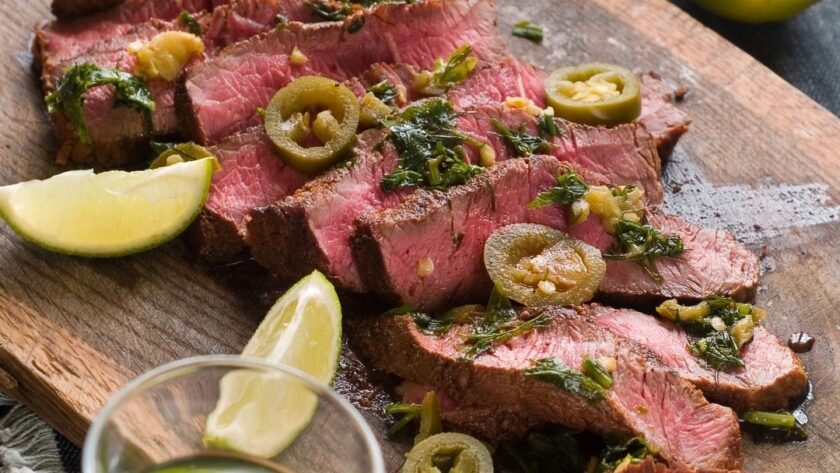There’s something undeniably satisfying about biting into a piece of perfectly grilled meat—tender, juicy, and packed with flavor. While high-quality cuts and precise grilling techniques are essential, there’s another element that can transform your barbecue game: marinading. Whether you’re preparing a steak, chicken, or even seafood, a good marinade is the secret weapon to unlock depth and complexity in your grilled meats. But what’s happening behind the scenes when you marinade? Let’s dive into the science of marinating and share a recipe for Marinated Skirt Steak Tacos with Pickled Onions and Capers to put theory into practice.
The Science Behind Marinading and Brining
At its core, marinading is about flavor infusion and tenderness. A marinade typically consists of three main components: an acid, oil, and flavor enhancers (such as herbs, spices, and aromatics). Each part plays a specific role:
- Acid: Ingredients like vinegar, citrus juice, or wine break down proteins, which helps to tenderize the meat. However, too much acid for too long can cause the meat to become mushy, so balance is key.
- Oil: Fat helps to distribute fat-soluble flavors (like herbs and garlic) across the meat. It also acts as a barrier, helping to retain moisture during cooking.
- Flavor Enhancers: This is where you get creative—garlic, ginger, soy sauce, mustard, cumin, and various herbs can all add their own signature notes to the marinade.
Brining, on the other hand, focuses on moisture retention. It involves soaking the meat in a saltwater solution, which causes the cells in the meat to absorb water, helping to keep it juicy during cooking. Salt also denatures proteins, allowing them to form a gel that traps liquid, so the meat doesn’t dry out.
While brining is particularly useful for leaner cuts of meat (think chicken breast or pork chops), marinades are ideal for imparting bold, complex flavors to more robust cuts like beef, pork, or even lamb. A marinade may not penetrate deeply into the meat, but it works wonders on the surface and just below, making every bite flavorful.
Key Marinading Techniques
- Time It Right: Marinading times depend on the type of meat. Tougher cuts, like flank or skirt steak, can handle longer marinades (4-6 hours), while more delicate proteins like chicken or shrimp only need 30 minutes to 2 hours. Be cautious with acidic marinades, as they can “cook” the meat if left too long.
- Use a Non-Reactive Container: Acidic marinades can react with metal, leaving behind unwanted flavors or affecting the texture of your meat. Always use glass, plastic, or stainless steel containers.
- Don’t Overwhelm the Meat: Balance your flavors—too many overpowering ingredients can mask the natural taste of the meat. Stick to a few strong flavors and let the grill enhance the rest.
- Marinade After Grilling (Optional): If you’re after big flavor, consider brushing the meat with some reserved marinade after it comes off the grill. Just be sure not to reuse any marinade that has come into contact with raw meat without boiling it first.
Now that you’ve got the science of marinating down, it’s time to apply it in the form of Marinated Skirt Steak Tacos with Pickled Onions and Capers—a dish that balances the rich, beefy flavor of the steak with the tang of pickled onions and the briny burst of capers.



